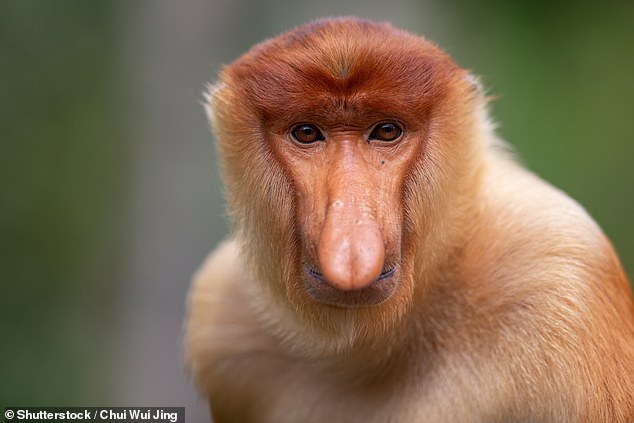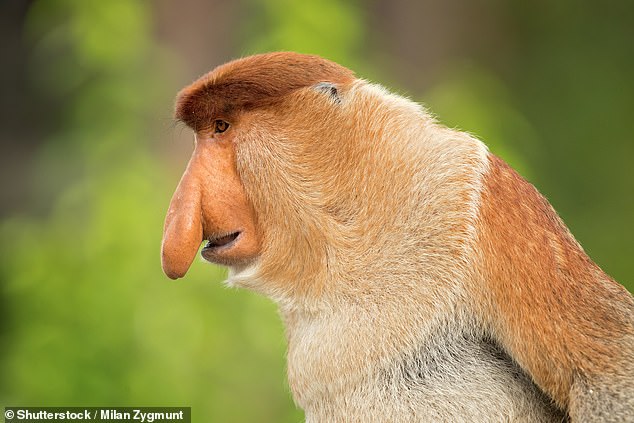Unraveling the mystery of the world’s ugliest animal: Scientists reveal why male proboscis monkeys have large, phallic noses – and say they’re crucial for mating success
- Male proboscis monkeys have big noses, earning the title of ‘ugliest animals’
- They offer great benefits – especially when it comes to attracting a female
It’s safe to say that proboscis monkeys are some of the strangest-looking creatures in the animal kingdom.
While female monkeys have pointy noses, the males have large, rather phallic noses, earning them the title of ‘world’s ugliest animals’.
Now a study has finally gotten to the bottom of this unusual facial feature.
Scientists from the Australian National University say their big noses are more than just an eye sore.
Instead, they offer several major benefits – especially when it comes to attracting a female partner.
It’s safe to say that proboscis monkeys are some of the strangest-looking creatures in the animal kingdom. While female monkeys have pointy noses, the males have large, rather phallic noses – earning them the title of ‘world’s ugliest animals’

Scientists from the Australian National University say their big noses are more than just an eye sore. Instead, they offer several major benefits – especially when it comes to attracting a female partner
Proboscis monkeys are endemic to Borneo and have been branded as one of the ugliest animals in the world because of their ugly noses.
In a new study, researchers tried to understand why this unusual trait evolved.
The team used 3D scans of monkeys’ skulls to understand the size and shape of the internal structure of their nasal cavity.
The scans showed how the shape of the nasal cavity evolved so that males honked and roared louder and deeper.
“We wanted to understand why the noses of male proboscis monkeys are so large and whether their nasal cavities have a distinctive shape,” said Dr. Katharine Balolia, who led the study.
‘We discovered that males have much larger nasal passages than female monkeys, and that their nasal passages are also shaped differently than those of females.

Proboscis monkeys are endemic to Borneo and have been branded as one of the ugliest animals in the world thanks to their ugly noses
‘By being able to express louder and deeper sounds thanks to a longer and larger nasal cavity, male monkeys can assert their health and dominance.
‘This helps the male monkeys attract females and repel other males.
‘The more females a male can attract, the more he can sire more offspring. So having a big nose and being able to honk and nasal roar more easily thanks to a uniquely shaped nasal cavity really helps men demonstrate their quality and status to potential female partners.”
Borneo is covered in a jungle-like environment, which could help explain why the monkeys’ noses have grown so large, Dr. Balolia said.
“Proboscis monkeys live in mangroves and coastal forest environments and often cannot see each other through the trees,” she said.
“Dude loud, nasal calls are important for communicating with each other, especially among men.”
‘The fleshy nasal tissue probably enlarged over time because it enhanced their ability to make nasal honks and roars. Proboscis monkeys stiffly extend their noses when making these calls.
‘Females may then have come to find big noses visually attractive when selecting a mate, because it was an honest signal of health and dominance.’
The scans also showed that the nasal cavity becomes larger with age, which explains why older men have larger noses.
‘This coincides with them achieving dominance status among other male apes, allowing them to deter other males and attract many females ready to reproduce,’ added Dr. Balolia added.
